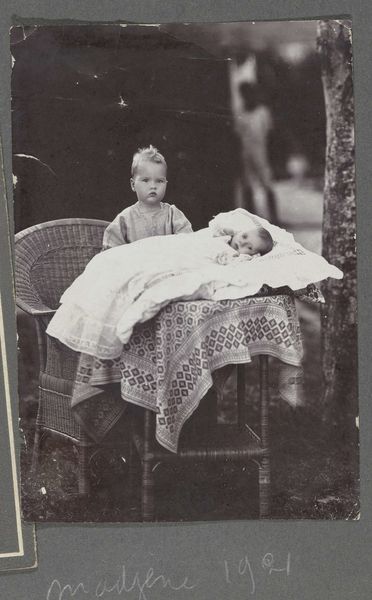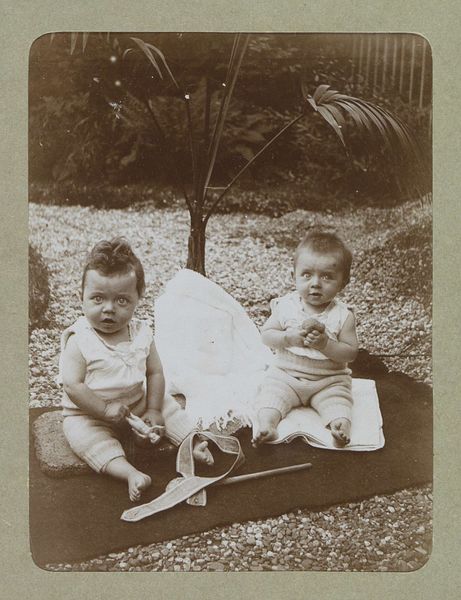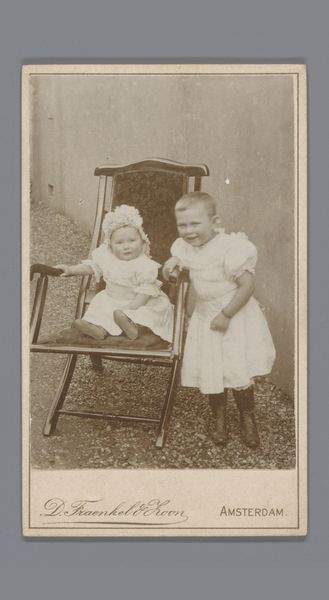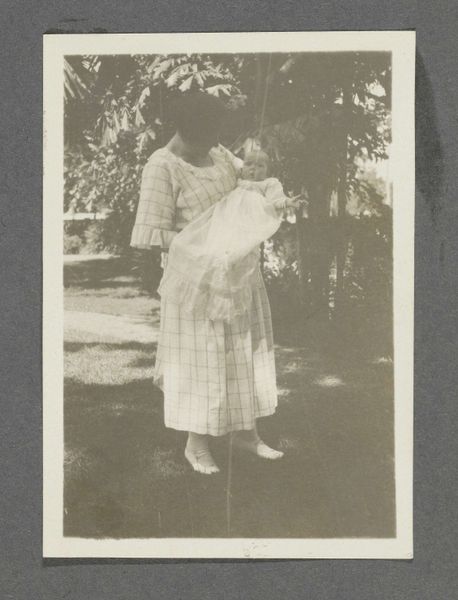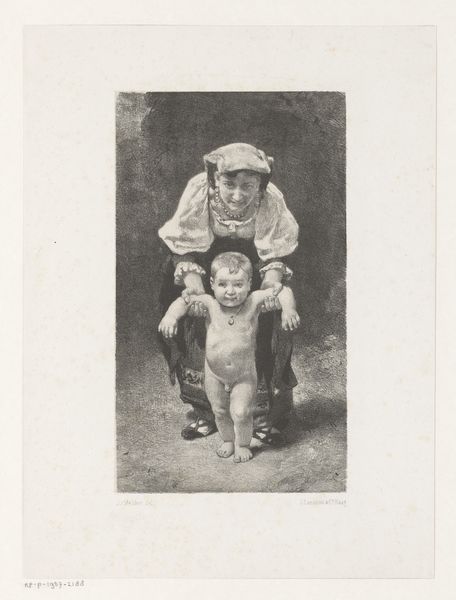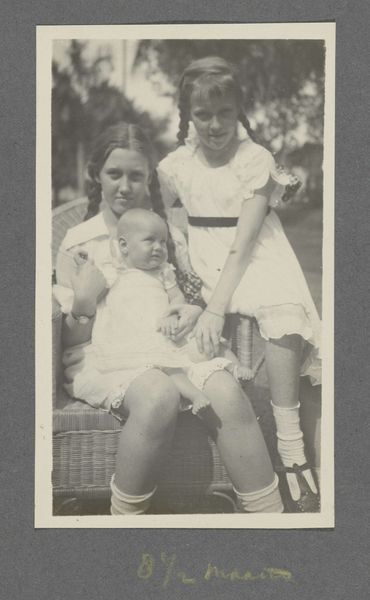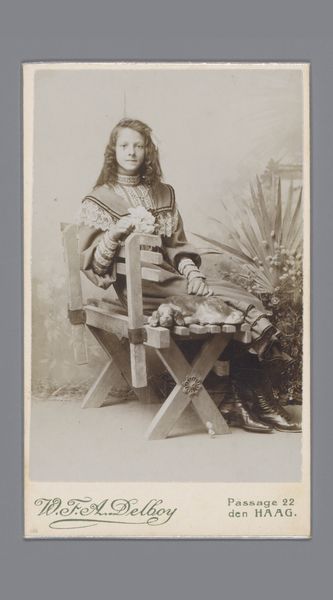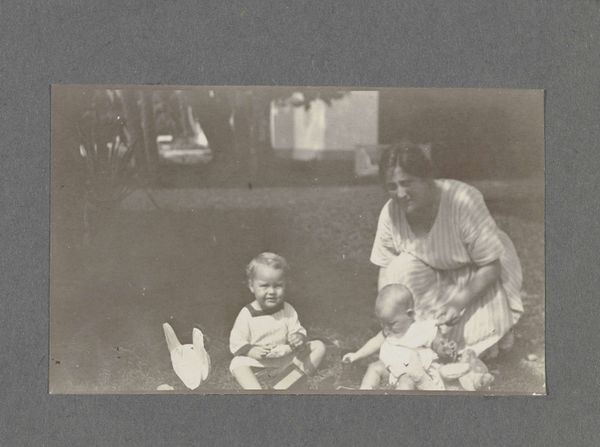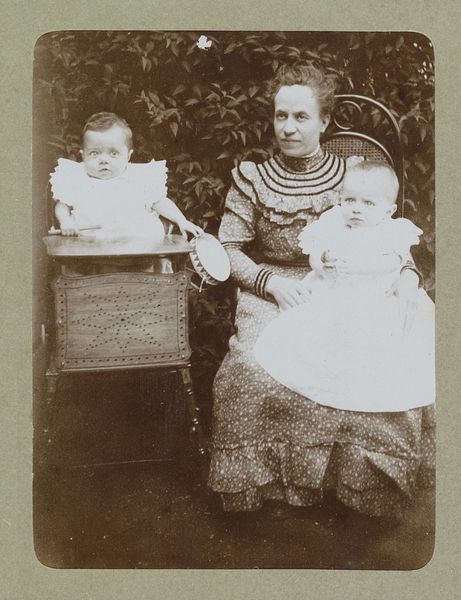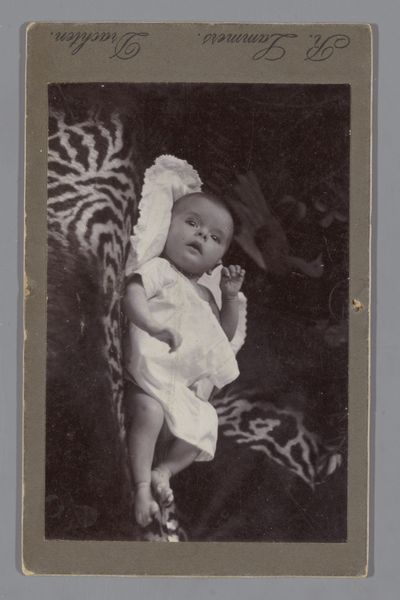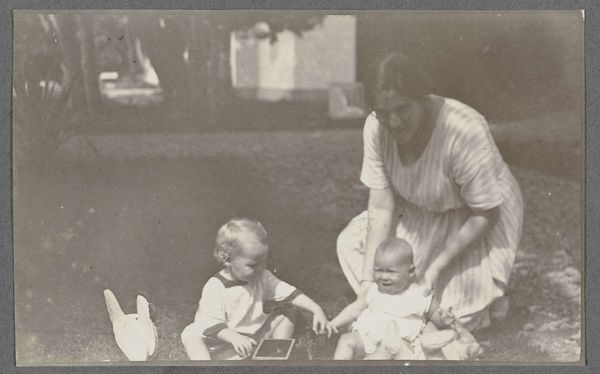
Portret van een onbekende Indonesische kinderverzorgster (destijds 'baboe' genoemd) en Georges Bergsma op Sumatra Possibly 1915 - 1925
0:00
0:00
anonymous
Rijksmuseum
print, photography, albumen-print
#
portrait
# print
#
asian-art
#
figuration
#
photography
#
historical photography
#
albumen-print
#
realism
Dimensions: height 141 mm, width 99 mm
Copyright: Rijks Museum: Open Domain
Editor: Here we have an albumen print, most likely from between 1915 and 1925, titled "Portret van een onbekende Indonesische kinderverzorgster (destijds 'baboe' genoemd) en Georges Bergsma op Sumatra"—which translates to "Portrait of an unknown Indonesian nanny, then called 'baboe,' and Georges Bergsma on Sumatra." The photograph has an incredibly intimate feel to it. How can we interpret this work within its historical setting? Curator: This image speaks volumes about the complex social dynamics of colonial Indonesia. The term 'baboe' itself is loaded, reflecting a hierarchical relationship and the exploitation of Indonesian women as domestic servants. What does the composition suggest to you about power? Editor: The child, Georges, is literally elevated, standing on the table, while the nanny is positioned behind and slightly lower. Her gaze is direct but passive. Curator: Exactly. This visual hierarchy mirrors the social hierarchy of the time. These portraits, commissioned and consumed by the colonizers, often presented a skewed view of reality. The inclusion of local people served as a marker of place and, problematically, possession. It reinforced the colonizer's identity and status. Do you notice anything else? Editor: The table cloth; its pattern appears to have an attempt at symmetry. Is this likely a colonial marker as well? Curator: Indeed! Objects, too, became symbols of colonial presence. They acted as props and were curated to reinforce notions of exoticism, wealth, and power. By analysing who is included, and how, we can reveal power structures that operated within colonial society. Editor: It's eye-opening how much historical context is embedded within this single image, especially concerning social inequalities. Curator: Precisely! It invites us to critically examine the role photography played in shaping and perpetuating colonial narratives. What stories were silenced in favour of colonial self-representation?
Comments
No comments
Be the first to comment and join the conversation on the ultimate creative platform.
